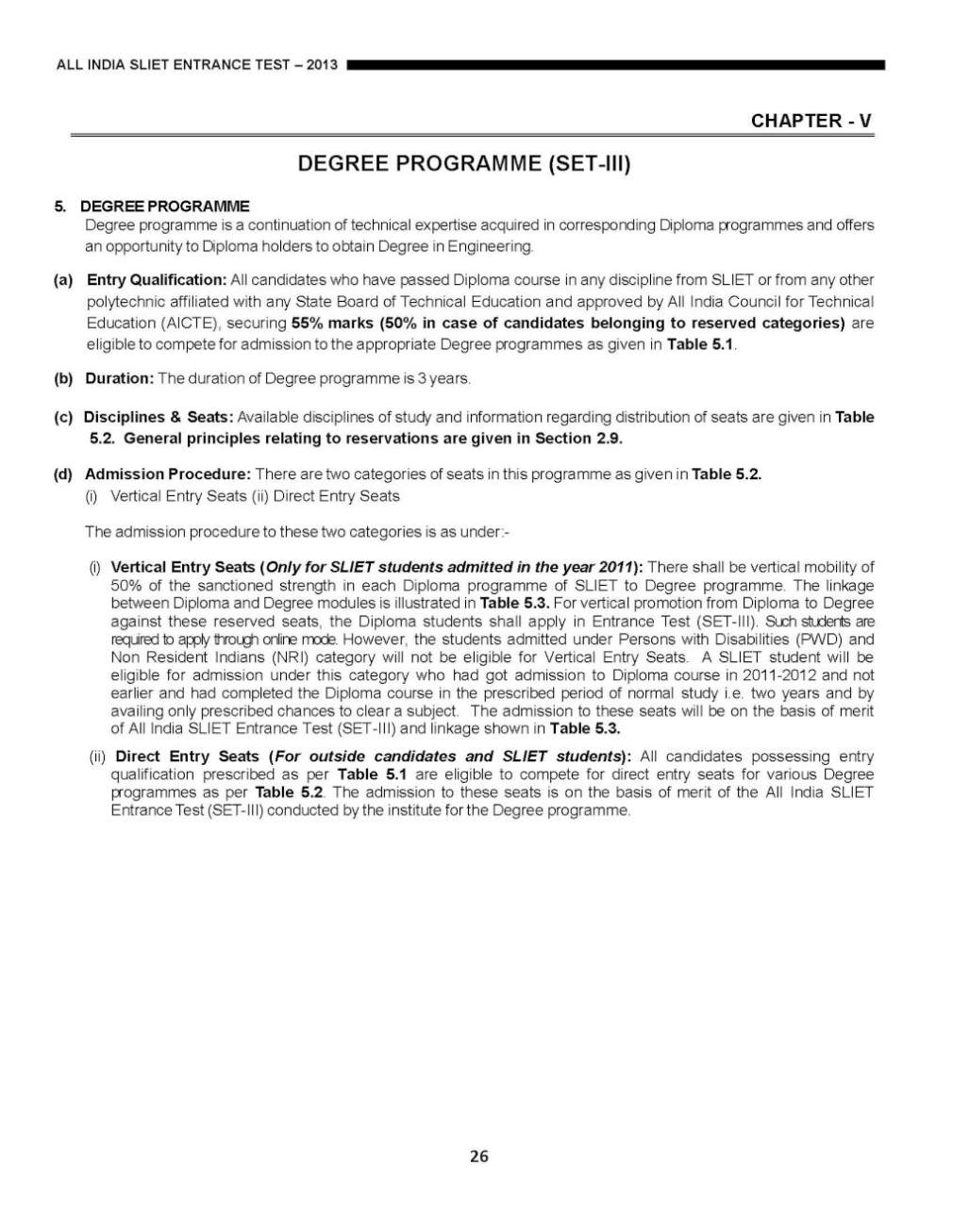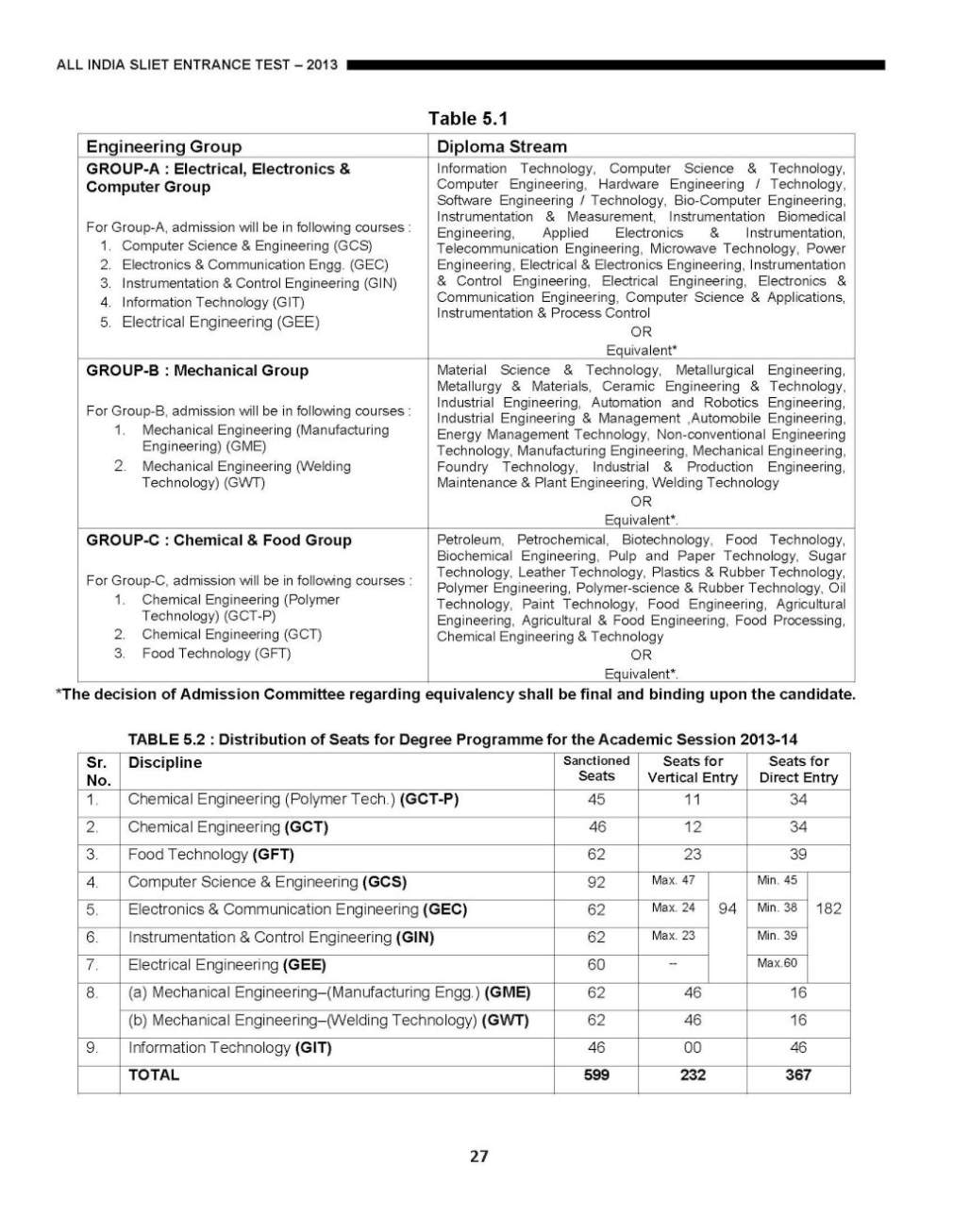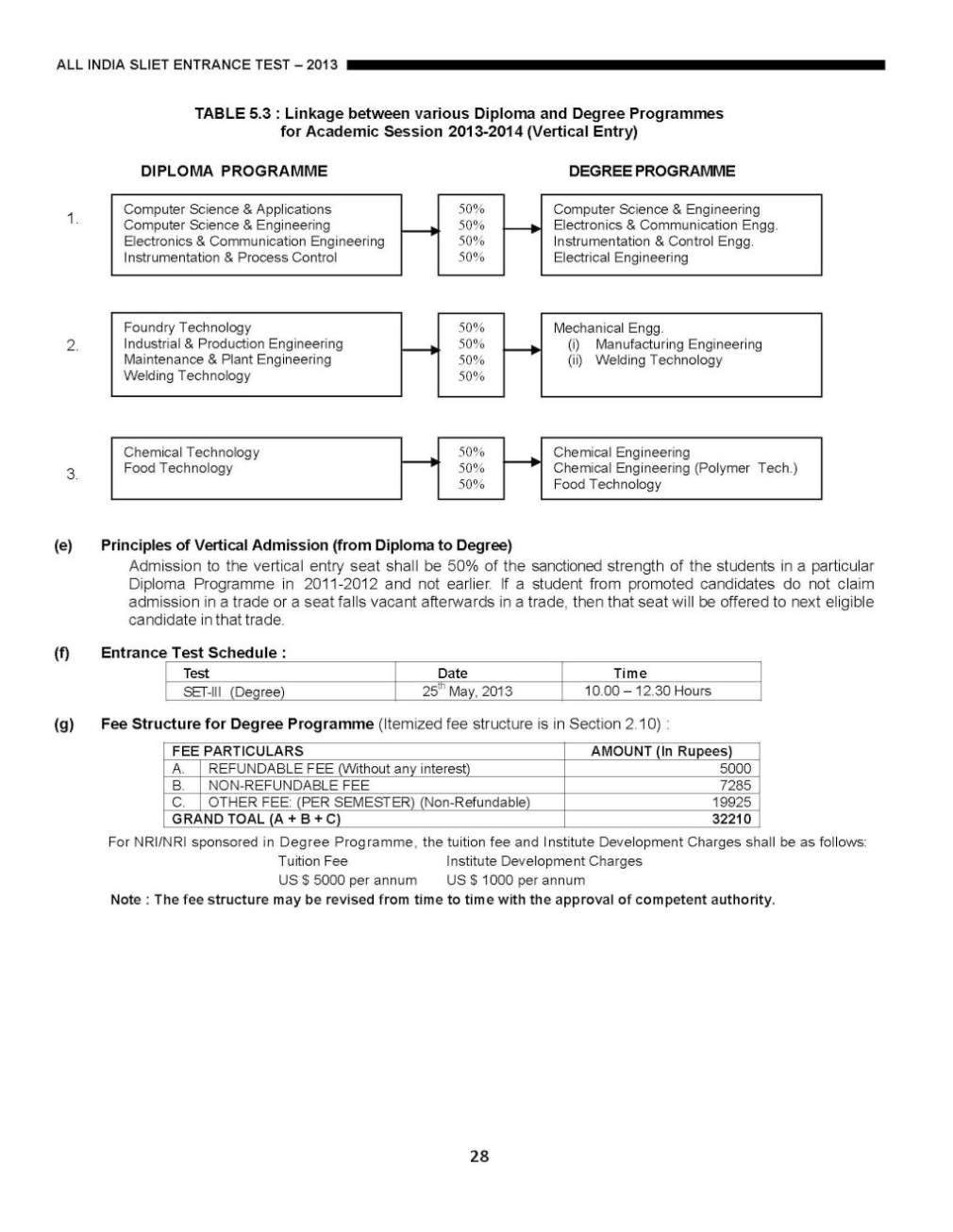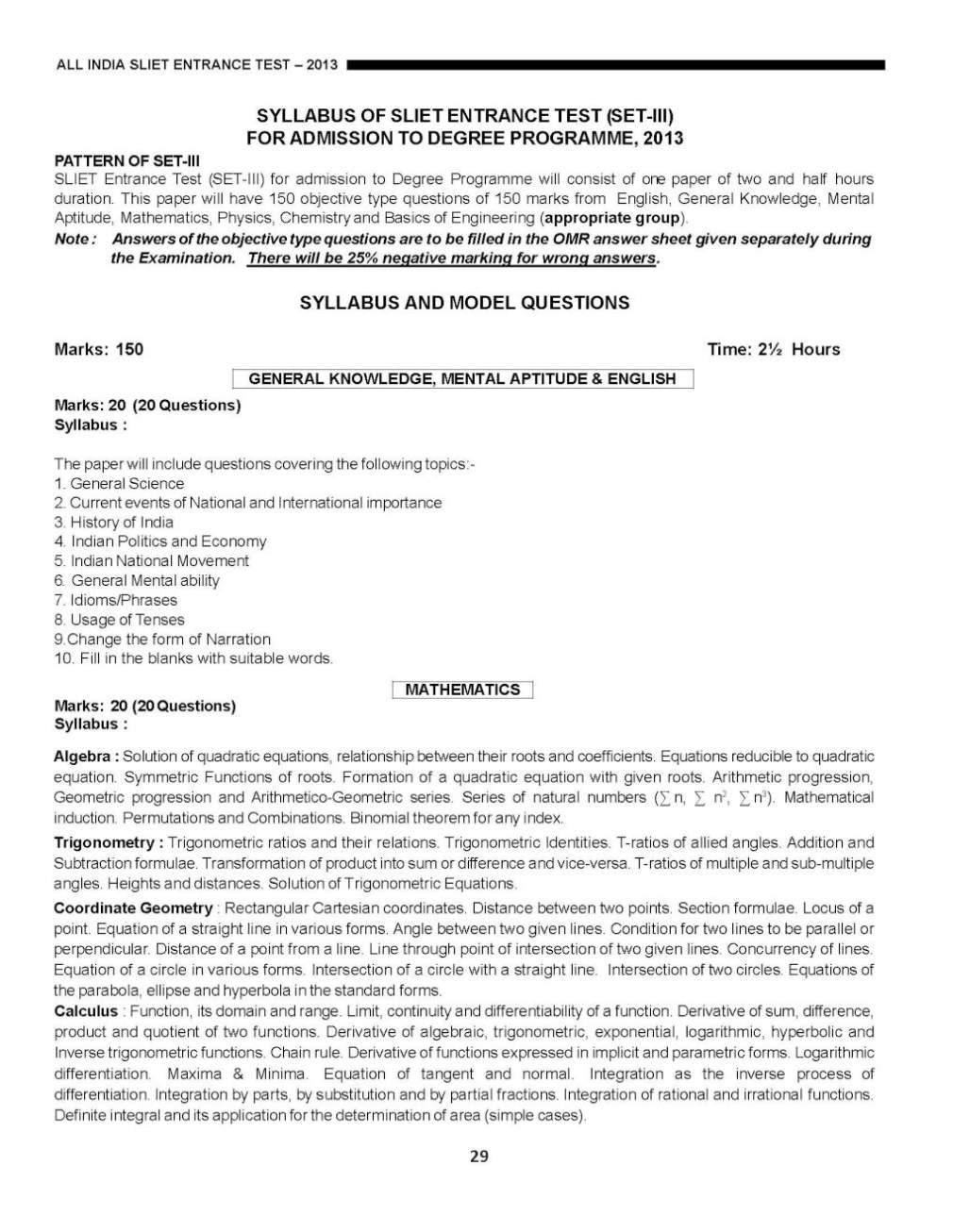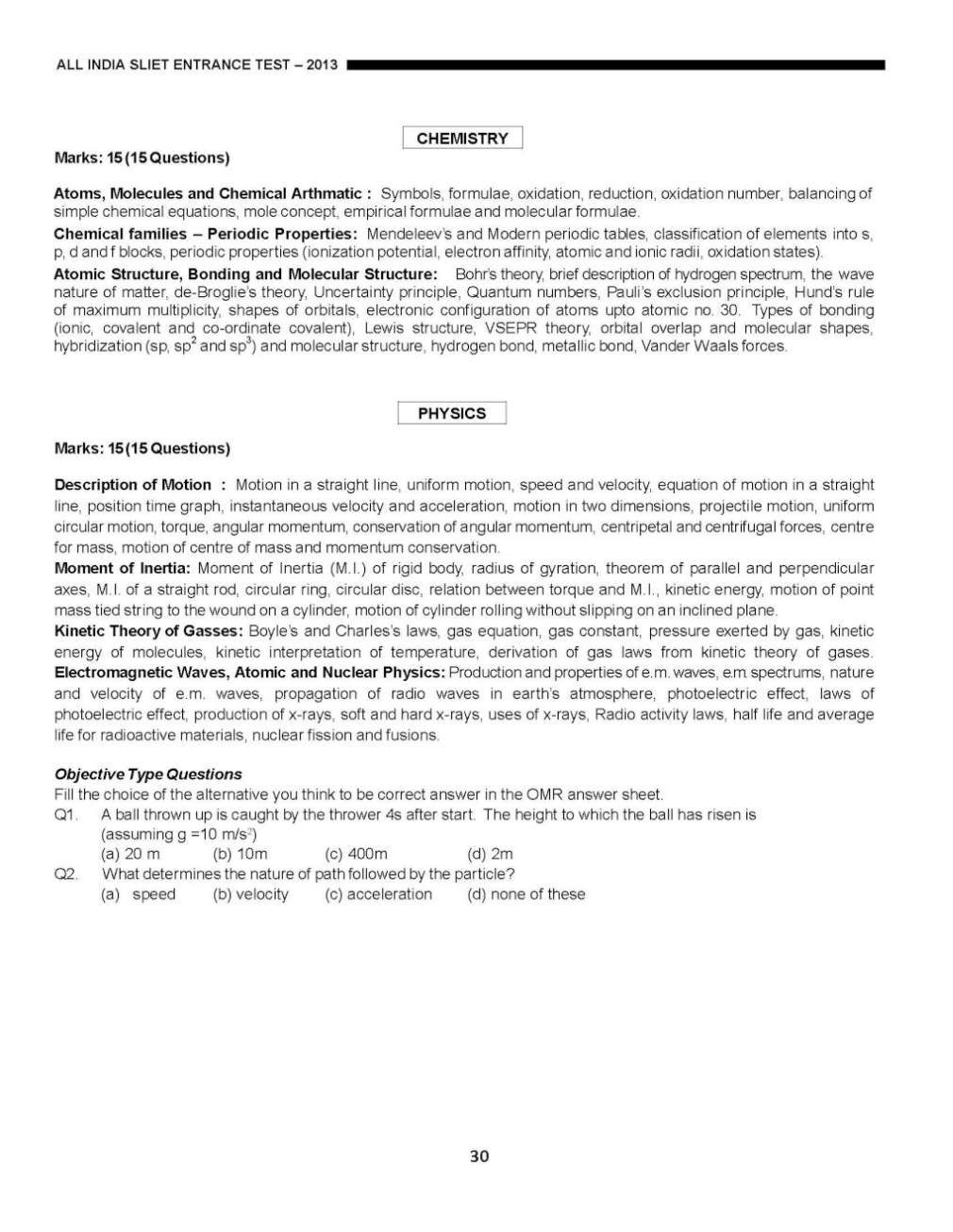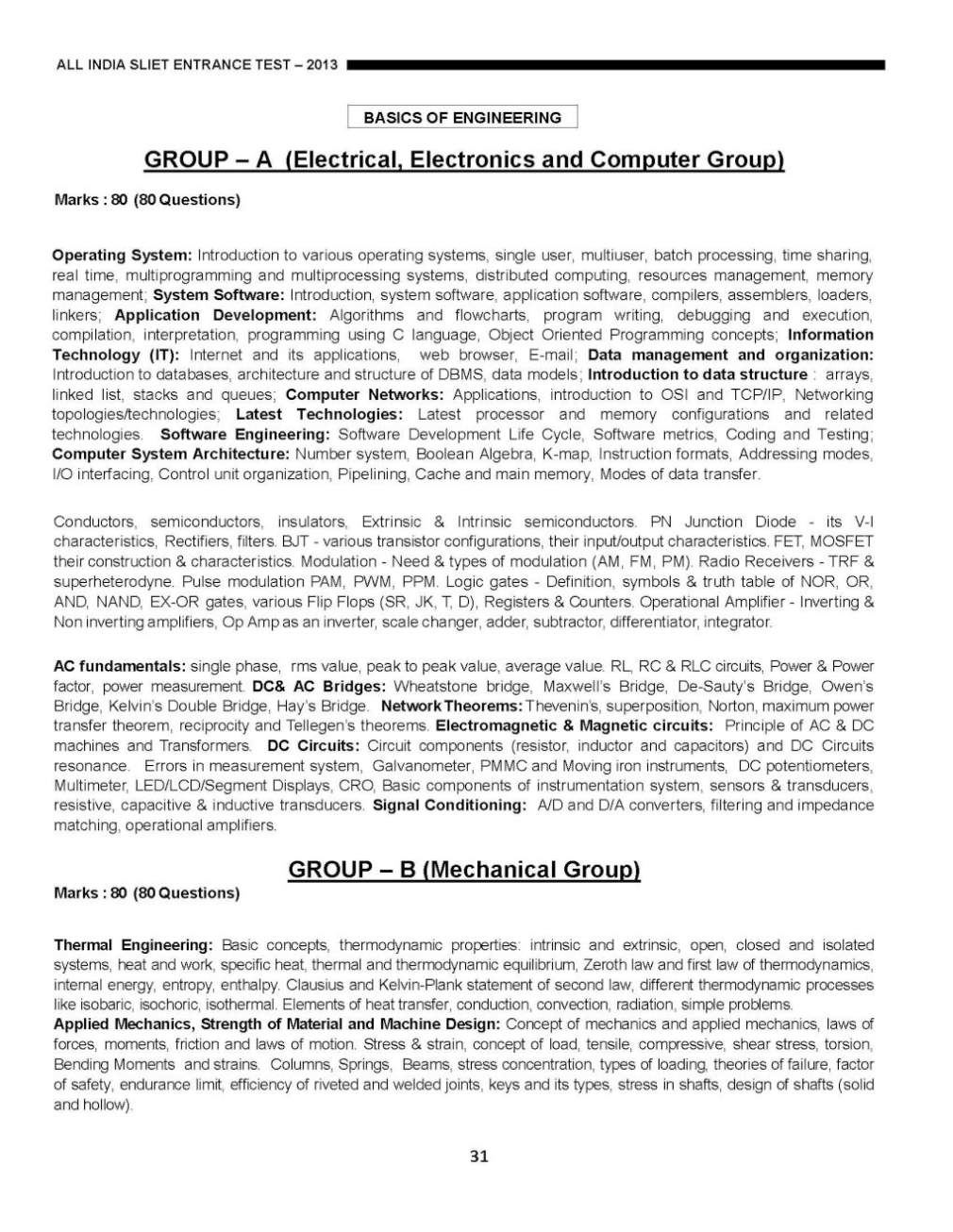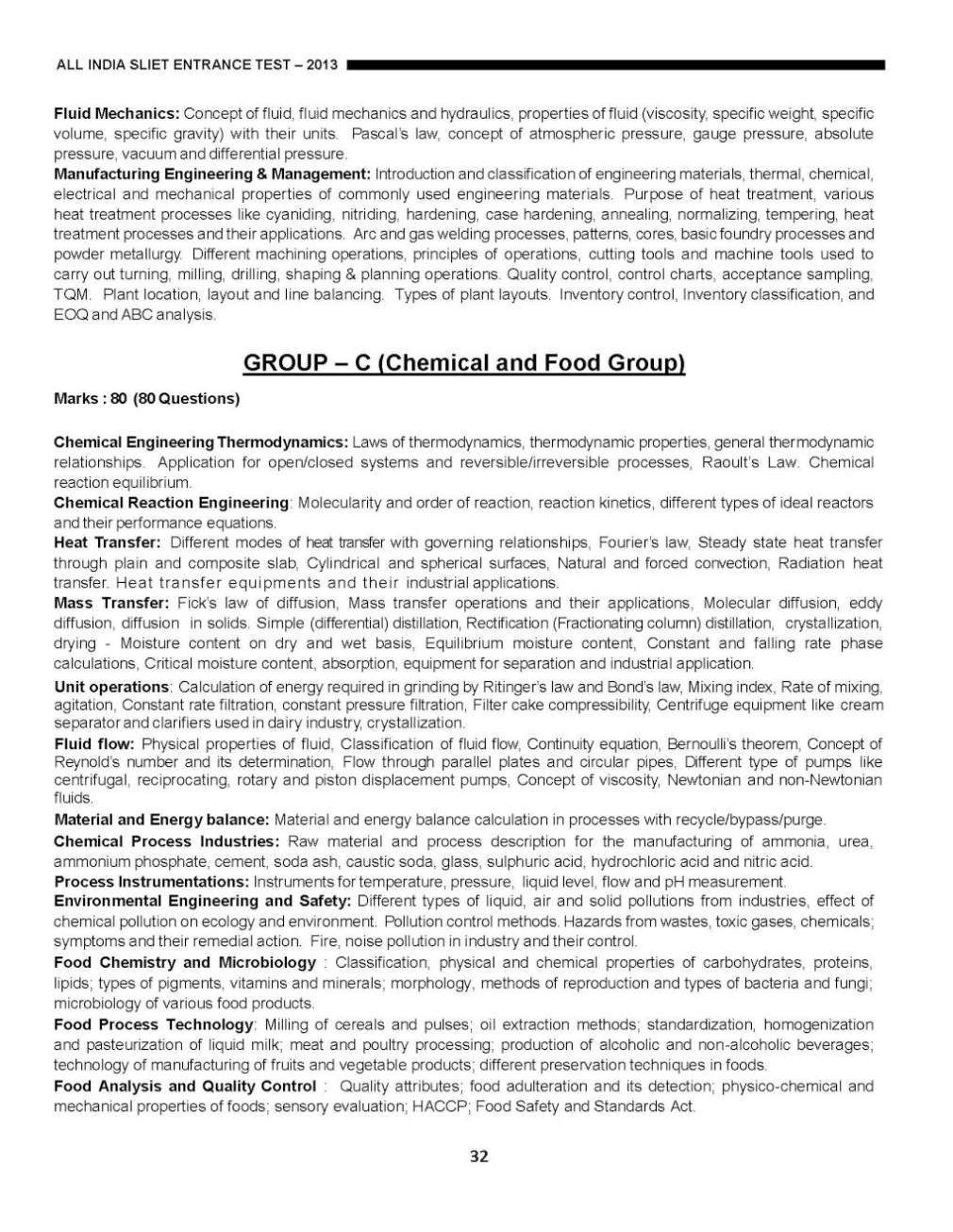| Re: Sliet set iii
Sant Longowal Institute of Engineeirng and Technology is a type of public
university.
It was established in the year 1989.
It is located in Longowal, Sangrur, Punjab, India.
It is affiliated by UGC, NAAC, AICTE, NBA.
Set III degree programs are continuing programs for the candidates of
diploma courses to get the degree in engineering.
As you have asked about the SLIET Set III syllabus for computer science and
engineering course, check below for the details
Paper-I : (English, General Knowledge, Mental Aptitude, Mathematics, Physics & Chemistry)
(i) English, General Knowledge & Mental Aptitude
General Science
Current events of National and International importance
History of India
Indian Politics and Economy
Indian National Movement and also General Mental ability
Idioms/Phrases.
(ii) Mathematics
Algebra : Solution of quadratic equations, relationship between their roots and coefficients. Equations reducible to quadratic equation. Symmetric Functions of roots. Formation of a quadratic equation with given roots. Arithmetic progression, Geometric progression and Arithmetico-Geometric series. Series of natural numbers (Sn, Sn2, Sn3). Mathematical induction. Permutations and Combinations. Binomial theorem for any index.
Trigonometry : Trigonometric ratios and their relations. Trigonometric Identities. T-ratios of allied angles. Addition and Subtraction formulae. Transformation of product into sum or difference and vice-versa. T-ratios of multiple and sub-multiple angles. Heights and distances.
Coordinate Geometry : Rectangular Cartesian coordinates. Distance between two points. Section formulae. Locus of a point. Equation of a straight line in various forms. Angle between two given lines. Condition for two lines to be parallel or perpendicular. Distance of a point from a line. Line through point of intersection of two given lines. Concurrency of lines. Equation of a circle in various forms. Intersection of a circle with a straight line. Equations of tangent and normal to a circle. Intersection of two circles. Equations of the parabola, ellipse and hyperbola in the standard forms.
Calculus : Function, its domain and range. Limit, continuity and differentiability of a function. Derivative of sum, difference, product and quotient of two functions. Derivative of algebraic, trigonometric, exponential, logarithmic, hyperbolic and Inverse trigonometric functions. Chain rule. Derivative of functions expressed in implicit and parametric forms. Logarithmic differentiation. Integration as the inverse process of differentiation. Integration by parts, by substitution and by partial fractions. Integration of rational and irrational functions. Definite integral and its application for the determination of area (simple cases).
(iii) Chemistry
Atoms, Molecules and Chemical Arthmatic : Symbols, formulae, oxidation, reduction, oxidation number, balancing of simple chemical equations, mole concept, emparical formulae and molecular formulae.
Chemical Families- Periodic Properties : Mendeleev's and Modern periodic tables, classification of elements into s, p, d and f blocks, periodic properties (ionisation potential, electron affinity, atomic and ionic radii, oxidation states).
Atomic Structure, Bonding & Molecular Structure : Bohr's theory, brief description of hydrogen spectrum, the wave nature of matter, de-Broglie's theory, Uncertainty principle, Quantum numbers, Pauli's exclusion principle, Hund's rule of maximum multiplicity, shapes of orbitals, electronic configuration of atoms upto atomic no. 30. Types of bonding (ionic, covalent and co-ordinate covalent), Lewis structure, VSEPR theory, orbital overlap and molecular shapes, hybridisation (sp, sp2 and sp3) and molecular structure, hydrogen bond, mettalic bond, Vanderwaals forces.
(iv) Physics
Units & Dimension : Needs for measurements, systems of units, S.I. units, fundamental and derived units. Dimension and their applications. Accuracy and errors in measurements, Random and instrumental errors.
Vector Analysis : Scalars and vectors, vectors in two and three dimensions, unit vector, vector addition and multiplication, Resolution of a vector in a plane, rectangular components.
Description of Motion : Motion in a straight line, uniform motion, speed and velocity, equation of motion in a straight line, position time graph, velocity and graph, instantaneous velocity and acceleration. Motion in two dimensions,Projectile motion, uniform circular motion, torque, angular momentum, conservation of angular momentum,centripetal and centrifugal forces.
Paper II- (Basics of Engineering)
Computer Science and Engineering & Information Technology
Operating Systems, introduction to various operating systems, single user, multi user, batch processing, time sharing, real time and multi processing and distributed computing, graphical user interface, memory management. Introduction to computer, components of computer, compilers, assemblers, loaders, linkers. Introduction to internet, networking, information technology. Introduction to databases, architecture & structure of DBMS, Data Models, Data organization. Algorithms, flowcharts, decision trees, introduction to C programming, Object oriented concepts.
|
